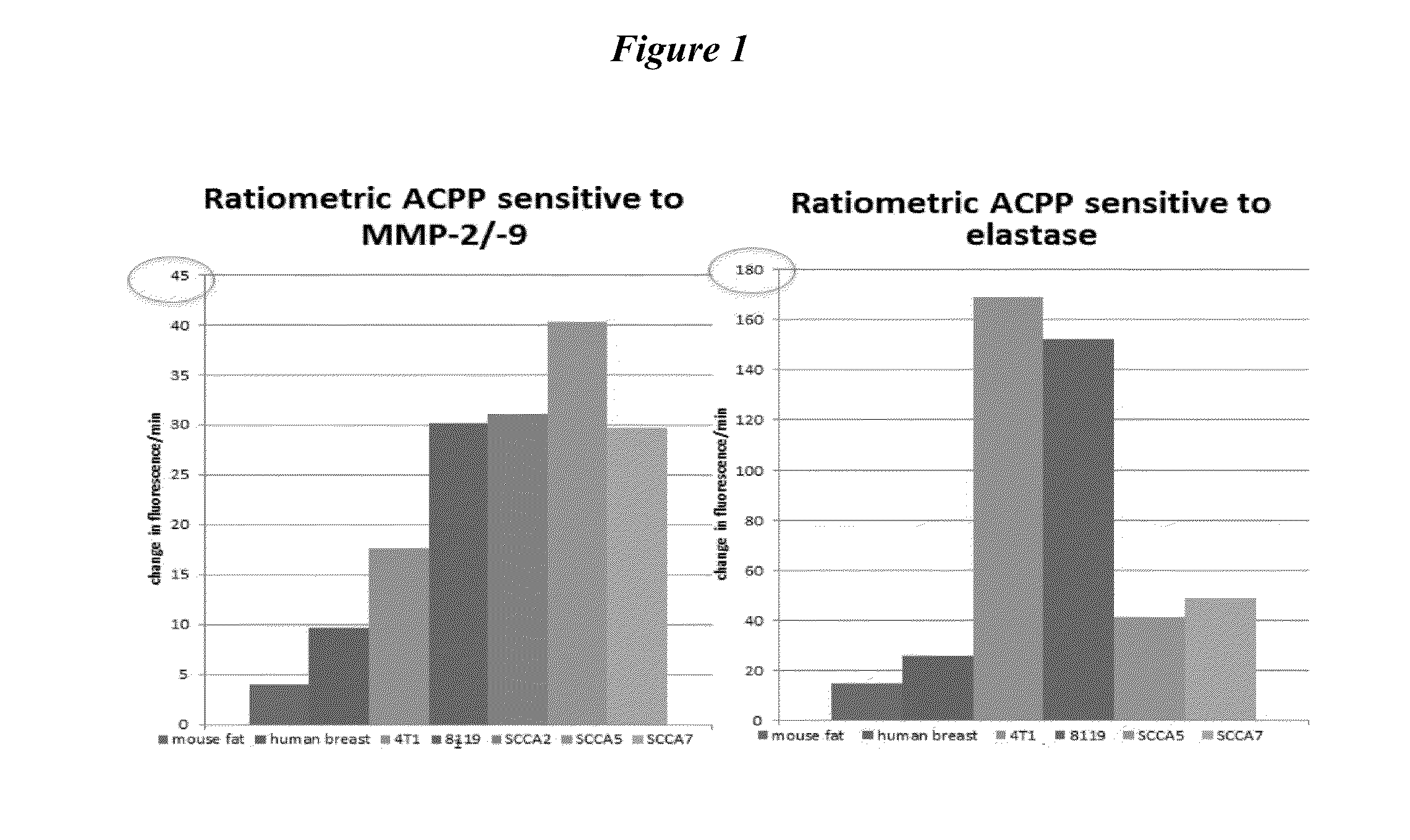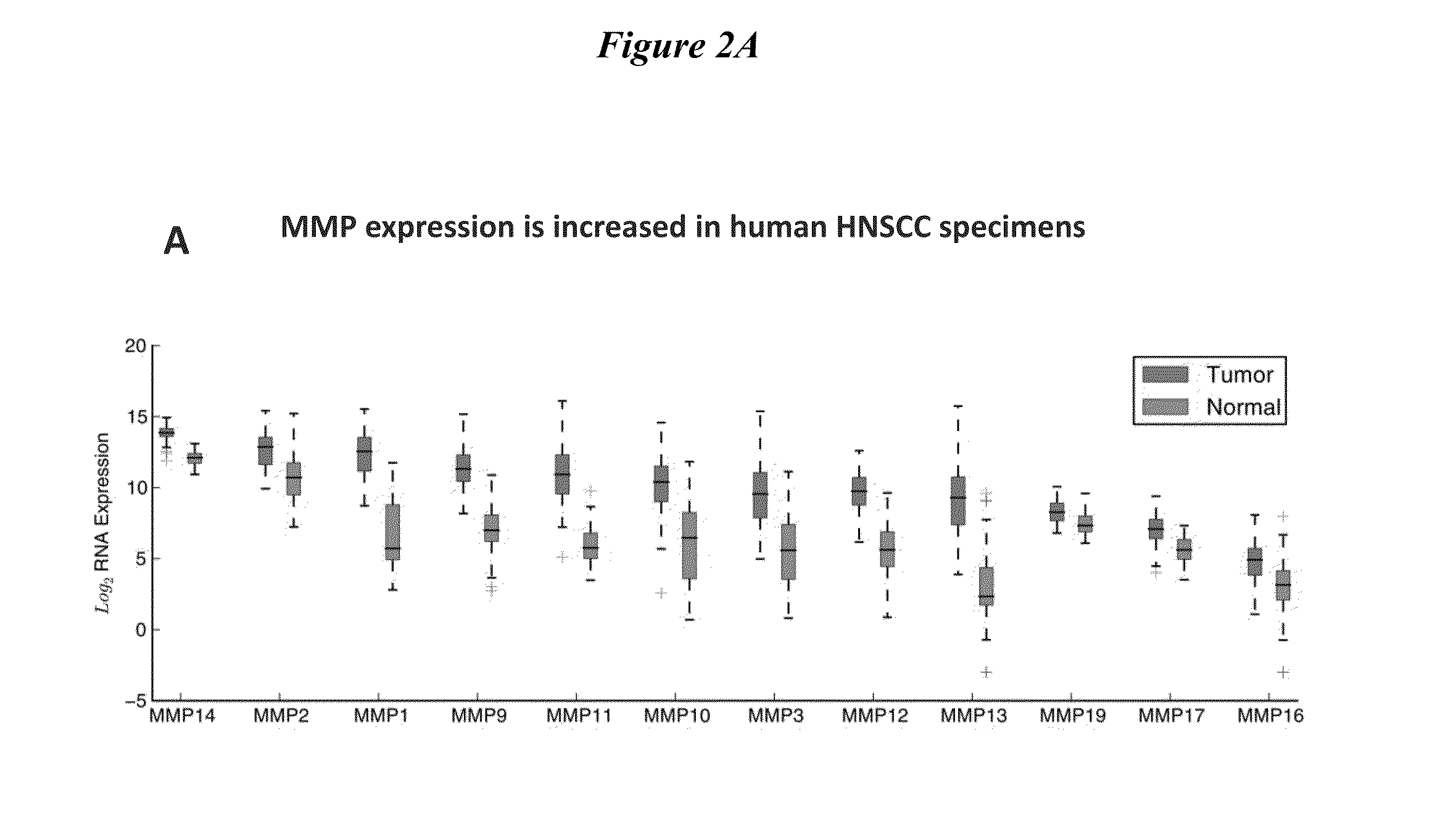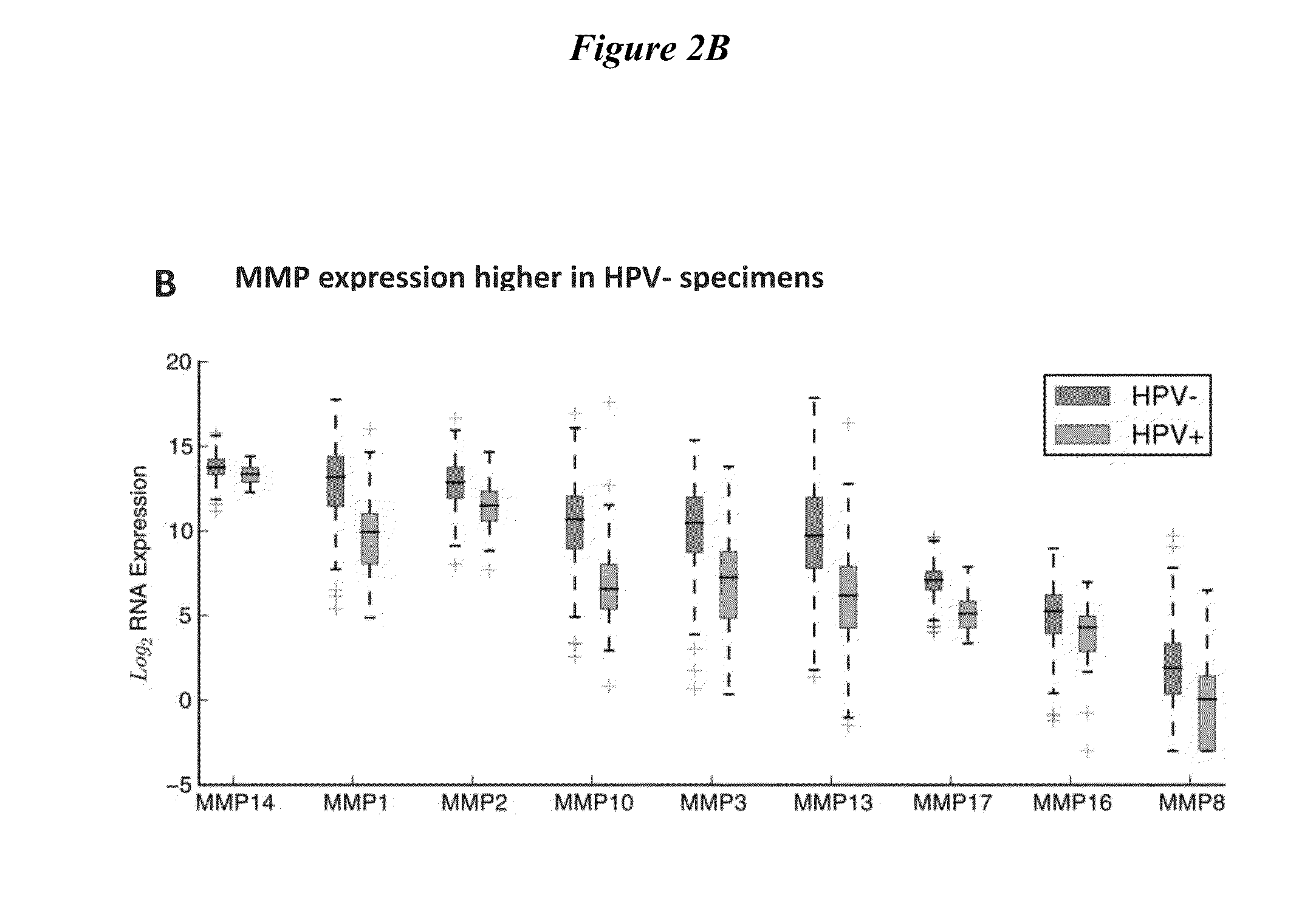Personalized protease assay to measure protease activity in neoplasms
a protease and protease technology, applied in the field of personalized protease assay to measure protease activity in neoplasms, can solve the problems of unable to remediate the poor outcome, extra trauma and expense, and difficult to deliver markers, drugs, nucleic acids, etc., to inhibit or prevent the cellular uptake of portion b, and the effect of preventing the cellular uptake of portion
- Summary
- Abstract
- Description
- Claims
- Application Information
AI Technical Summary
Benefits of technology
Problems solved by technology
Method used
Image
Examples
example 1
Methods for Measuring Ex Vivo Cleavage of FRET-Based Enzymatically Cleavable Peptide Probes by Tumor Extract
[0256]The rationale is to identify enzymatically positive tumors in a patient population that may benefit from the use of enzymatically cleavable peptide probes for early tumor detection and intraoperative margin evaluation. Experiments have been performed using probes that detected either MMPs (PLGLAG (SEQ ID NO: 1) and PLGC(met)AG (SEQ ID NO: 2) or elastases (RLQLK(acetyl)L (SEQ ID NO: 26). A panel of probes will be expanded to include other tumor expressed proteases.
[0257]Xenograft Tumor Extracts:
[0258]Animals models of a variety of cancers cancer were generated as previously described. Tumors were grown to 0.5 cm-1 cm and then surgically excised. Following dissection, tissue was gently homogenized in PBS, while kept cooled on ice to minimize the release of intracellular and intraorganellar proteases. Homogenates were microcentrifuged at 14,000×g for 1 minute, and supernata...
example 2
Generation of Panel of ACPP for Profiling Tumor Protease Activity
[0269]Multiple ACPPs with varied protease cleavage sequence will be used to establish each specific tumors protease profile. Currently the panel consist of ACPPs that are selective for MMPs, elastases, plasmin, thrombin. MMP 2,9 cleavable sequence PLGLAG (SEQ ID NO: 1), PLGC(met)AG (SEQ ID NO: 2). Other MMP selective substrates could include RS-(Cit)-G-(homoF)-YLY (SEQ ID NO: 4), CRPAHLRDSG (SEQ ID NO: 5), SLAYYTA (SEQ ID NO: 6), NISDLTAG (SEQ ID NO: 7), PPSSLRVT (SEQ ID NO: 8), SGESLSNLTA (SEQ ID NO: 9), RIGFLR (SEQ ID NO: 10). Elastase cleavable sequence RLQLA(acetyl)L (SEQ ID NO: 11). Plasmin selective substrate RLQLKL (SEQ ID NO: 12). Thrombin selective substrates DPRSFL (SEQ ID NO: 13), PPRSFL (SEQ ID NO: 14), Norleucine-TPRSFL (SEQ ID NO: 15). Chymase selective substrate GVAY|SGA (SEQ ID NO: 16). Urokinase-type plasminogen activator (uPA) and tissue plasminogen activator (tPA) selective substrate YGRAAA (SEQ ID N...
example 3
[0270]A personalized protease (PePA) assay will be provided which will find use in a variety of situations. A PePA assay will provide an assay for use in understanding the heterogeneity in levels of tumor specific enzymes between patients for a given cancer diagnosis. A PePA assay will also provide an assay for use in correlating tumor specific enzyme activity with known histologic grade / stage and patient prognosis. A PePA assay will provide an assay for use in identifying which patients may benefit from the use of individual enzymatically activatable probes for staging, medical and surgical management in a variety of cancers.
Example 4
Abstract
Objective:
[0271]1. Obtain matrix-metalloproteinase(MMP) expression profiles for head and neck squamous cell carcinoma(HNSCC) specimens from The Cancer Genomic Atlas (TCGA)[0272]2. Demonstrate HNSCC imaging using MMP-cleavable, fluorescently-labeled ratiometric activatable cell-penetrating peptide (RACPP).
Study Design:...
PUM
| Property | Measurement | Unit |
|---|---|---|
| waiting time | aaaaa | aaaaa |
| pH | aaaaa | aaaaa |
| time | aaaaa | aaaaa |
Abstract
Description
Claims
Application Information
 Login to View More
Login to View More - R&D
- Intellectual Property
- Life Sciences
- Materials
- Tech Scout
- Unparalleled Data Quality
- Higher Quality Content
- 60% Fewer Hallucinations
Browse by: Latest US Patents, China's latest patents, Technical Efficacy Thesaurus, Application Domain, Technology Topic, Popular Technical Reports.
© 2025 PatSnap. All rights reserved.Legal|Privacy policy|Modern Slavery Act Transparency Statement|Sitemap|About US| Contact US: help@patsnap.com



